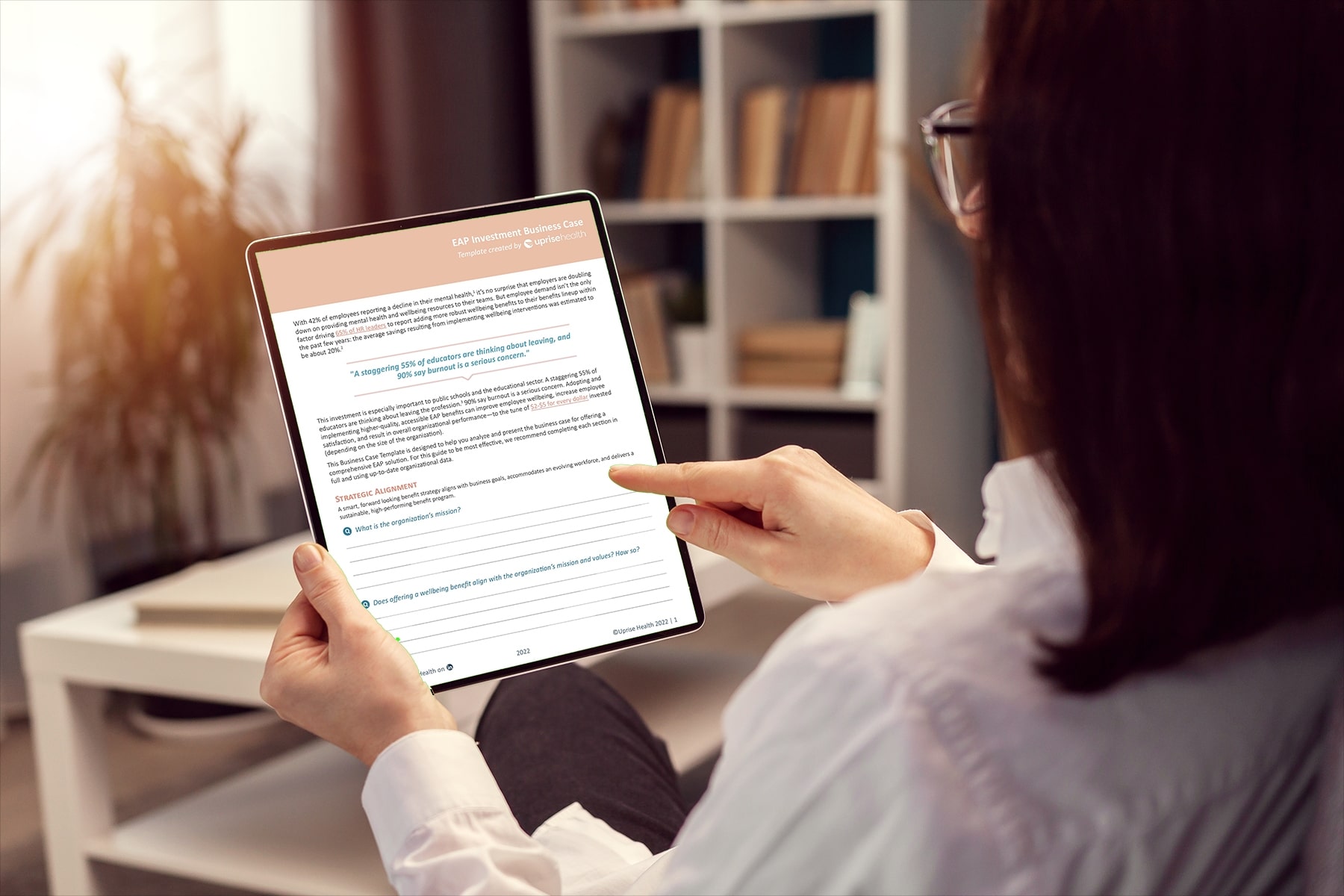In recent years, public and private sector organizations have upgraded their benefits offerings to include expanded wellness programs, digital mental health services, restructured health plan options, and the like. However, employee assistance programs (EAPs) have stayed more or less the same for decades. Many organizations continue to offer legacy EAPs, despite their notoriety for having consistently low utilization rates—between just 3% and 6%—year after year.1
There’s a clear and urgent need for public sector employees, especially those in public school systems, to have access to more comprehensive work-life support services. Adopting and implementing accessible, higher quality EAP benefits can improve employee wellbeing, increase employee satisfaction, and result in overall organizational performance—between $2-$5 for every dollar invested.
Below, learn more about why public sector organizations should make a business case for a comprehensive EAP solution and what needs to be included in a business case to convey the value of this critical employee benefit.
Why the public sector should make a business case for a better, more effective EAP
Once the need for a better EAP is identified, the next step is to make a business case. The primary purpose of a business case is to achieve company-wide buy-in by clarifying objectives, costs, and the ROI of implementing a new EAP benefit. To do this, project leaders will conduct due diligence, understand the expected outcomes, and most importantly, ensure strategic alignment across teams and with overall business goals.
Essentially, a business case helps move the conversation from what the organization needs and wants (a more comprehensive EAP) to why the organization needs and wants it (better work-life and wellbeing support for employees), justifying the project.2
By making a business case—and using it as a reference point throughout the entire project—organizations will have:2
- An understanding of the intended value of the project
- A plan for ensuring effective use of resources
- Documented responsibilities and priorities for the project manager and others involved in the project
- A tool to facilitate decisions on when and how the project plan needs to be changed
- A greater chance of completing the project successfully
After the completion of the project, a business case helps the organization assess the success of planning and implementation, creating a benchmark for other projects.2
Without a business case for implementing a new EAP, organizations are more likely to:3
- Waste valuable time, money, and people resources
- Improperly prioritize projects, leading to the inappropriate allocation of resources
- Focus on completing the project instead of delivering on the value
- End up with an EAP that doesn’t meet employee needs or align with strategic business goals
- Fail to meet the expectations of stakeholders, making it less likely to get the buy-in necessary for future projects
- Lose the ability to learn what works and repeat the process in the future
What should be included in a business case for an EAP?
There are some essential elements that a business case for a better EAP should include. These components are:
- Strategic alignment of the project
- Evaluation of the various options to understand the impact each has on the business goals and the desired outcome
- Project and operational needs of implementing a better EAP
- Calculation of a projected range of costs for each option
- Cost-benefit analysis using the average costs of absenteeism, presenteeism, turnover, and overall lost productivity for your company
- Authorization details including the names and titles of stakeholders and decision-makers who will play a key role in moving the project forward
Gathering the information for each of these sections requires some research on the part of the project manager but will prove to be well worth the time and effort. To help make creating a business case for a new and improved EAP solution easier, we’ve developed an unbiased EAP business case template for K-12 and higher education. The core framework can be applied to other industries, as well.






